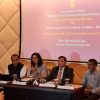Goa is abuzz with excitement as vintage bike and car owners, users, collectors and fans are decking […]

CAN TIGERS REPLACE CORRUPT POLITICIANS?
Uncategorized November 14, 2025By Dr Olav Albuquerque
Once tigers roamed free in Goan villages…
ARTIFICIAL intelligence has supplanted the old method of using pug marks to do a headcount of the tiger population, which will kick off in Goa from December as part of the country’s advanced wildlife census known as the All India Tiger Estimation (AITTE) 2026. There was a time during the Portuguese rule in Goa from 1510 to 1961 when tigers roamed Goan villages, but with Portuguese soldiers collecting tiger skins as trophies — that has become a thing of the past.
The tiger census in Goa will use ground tracking and habitat mapping, apart from satellite images and remote sensing and camera trap methods to record the tiger population and their habitat. Interestingly, in Konkani and Marathi, apart from the other languages that use the Devanagari script, there is no separate word for tiger. The word used is “wagh” which also means leopards, panthers, cheetahs and other big cats.
PHASE I of the Goa tiger enumeration exercise which is ground based tracking, will take place between December 2025 and February 2026, which will be the most interesting phase as officers and volunteers will record the pugmarks, claw marks, scat and prey remains with vegetation data and signs of human activity — which is a paradox because humans do not have much activity where tigers breed whether it is Madhya Pradesh or Goa. Tigers know no boundaries and move in the jungles from one state to another as long as there is prey available in the jungles.
The data gathered from this enormous exercise will be painstakingly compiled and submitted to the governments of various states where tigers breed between March and May 2026 in six rounds. Phase II will use Satellite Integration methods and Remote Sensing to evaluate forest cover, terrain water sources for these tigers, human encroachments in their habitats apart from identifying wildlife habitats where these tigers can breed and identify other habitats where these tigers can breed.
CAMERA IDENTIFICATION
DURING the final phase, camera traps and Artificial Intelligence-based identification will be used as meshing and dovetailing tools between December 2025 and May 2026, so that cameras will be placed at strategic points, such as tiger trails, ridgelines, and waterholes, which were identified earlier during the surveys in the Goan villages.
In a nutshell, these are the three phases for the tiger census:
Phase I – Ground Surveys: From December 2025 to February 2026, officers and volunteers will record indirect tiger signs such as pugmarks, claw marks, scat, prey remains, vegetation density, and signs of human presence. Data from six rounds will be submitted from March to May 2026.
• Phase II – Satellite Integration & Remote Sensing: Remote sensing will help study forest cover, terrain, water sources, human encroachment, and critical habitats, while identifying wildlife corridors using satellite-aided mapping.
• Phase III – Camera Traps & AI Identification: Cameras will be placed along trails, ridgelines, and waterholes from December 2025 to May 2026. Active for 25 days, the cameras will capture tiger movements, and AI software will analyse unique stripe patterns to identify individual tigers.
Officials said volunteers and officers will undergo training by WII and NTCA Master Trainers before the census begins.
Historically, Goa’s tiger counts were not uniform because 2002 and 2006 yielded no results. The 2010 census recorded five tigers, a number that remained stable in 2014 with one male, two females, and two cubs. The 2018 census showed a drop to three tigers, suggesting the possibility of transient movement from Karnataka.
SPECIES BIOLOGY
THE Goa government can consider reintroduction of the tiger to solve the extinction crisis and, it also provides new knowledge of the species biology as to how these animals explore and utilize new environments. Six re-introduced tigers and three of their offspring in Panna Tiger Reserve, central India, have survived and bred among themselves, so the Goa government can reintroduce these tiger species in the state.
It was found that the release site had no influence on home range selection by the reintroduced tigers, regardless of the release method (soft or hard release) and origin (wild caught or raised in captivity). Although there was a high rate of initial movement, these animals exhibited strong site fidelity and territoriality subsequently.
Scientists have pointed out that the re-introduced animals behaved almost exactly the same way as that of native populations within Goa state, offering support for reintroduction strategies which look to restore not only the species population, but also ecosystem functions. The exploratory strategy and subsequent home range establishment by the reintroduced tigers, offer novel insights on species behaviour in a new environment, with implications for future conservation strategies that consider translocation-based recovery of tiger populations in the range countries.
(Dr Olav Albuquerque is a senior journalist cum practising advocate of the Bombay high court with a PhD in law and is an honorary member of the Goa Union of Journalists.)















